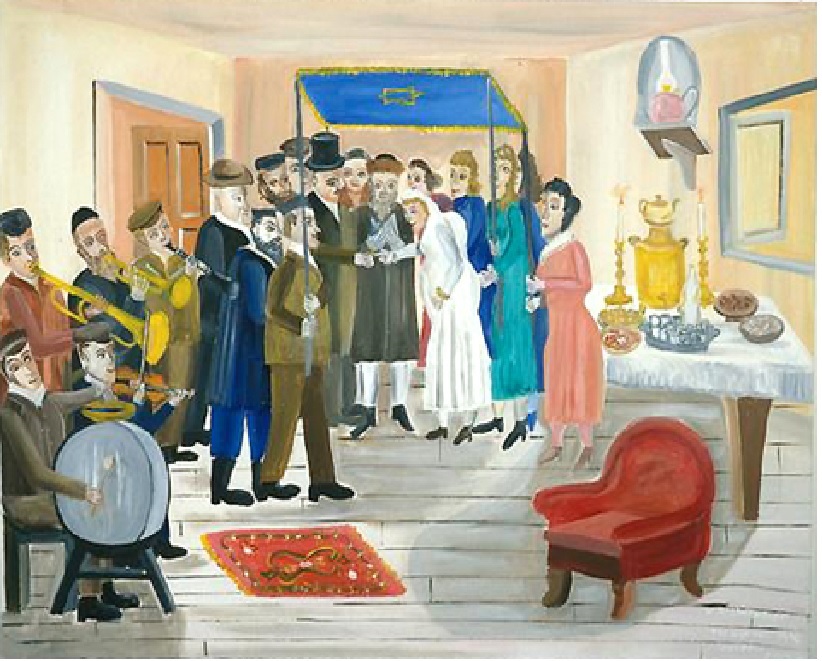Jewish life in Vilkaviskis under the Russian Rule
This material has been collected from personel memories and archival materials.
VILKAVISKIS
A small town in Southern Lithuania
Where the Jewish Community is no more
This site was built by Ralph Salinger of Kfar Ruppin, Israel
It is built to the glory of the Jewish Community of Vilkaviskis
You can contact me with any comments at salinger@kfar-ruppin.org,il

Recreation
The break in the daily drab existence were the weekly shabes, and holidays and the little celebrations such as a bris (circumcision), naming ceremony, wedding, burial society annual banquet, and military concerts in the field.
SUMMERS: CIRCUS, MUSIC, AND FISHING
In the summers, a katerinshtshik [one who grinds music from a music box] traveled with acrobats around the country and came to town. People threw coins to the performers in praise of their art. Occasionally a circus arrived, with clowns, animals, and trick horse riders. Once an American black man came to town with the circus and intrigued the children. They had never seen a person with black skin and they believed the black color would wash off. An old phonograph that played music caused excitement in the town. The instrument was a boxlike contraption to which rubber tubes were attached. An enterprising young businessman opened a music store where people listened to the tunes. They paid a kopeke to the exhibitor to hear the reproduced melodies. During the summer, outdoor activities were prevalent. Some children bathed and swam in the lake. Boys made fishing lines from hairs that they tore from a horse‘s tail in order to try catching fish from the creek. Youngsters played croquet and hide and seek in the park. A sign of summer was a Russian ice cream peddler in the street with a pot perched on his head yelling ―Sachar more Ozshone (Moreoezhenoe) [Sweet ice cream]
WINTERS: SLEIGHING AND SKATING
Winters were harsh with heavy snow and bitter cold. Streets filled with high snow drifts and in homes, ovens were heated to capacity in an attempt to warm a room. Residents often traveled by homemade box sleighs in sub-zero weather. An old horse, no longer fit for riding or carrying a carriage, was trained to pull the sleigh over frozen roads. People were envious of sleigh owners. Some children hitched rides on the back of a farmer‘s sleigh, and sleighing parties were arranged for entertainment. Happy youngsters nestled in mama‘s best kapishonen [woolen hoods] or wrapped a bashlik [warm head cover] tightly over their heads and ears for warmth and wore felt boots over their feet, as the driver cracked his whip and the merry party traveled through the crisp winter air.. Youngsters wearing skates made of a piece of wood tied solidly to their shoes skated onto the lake.



